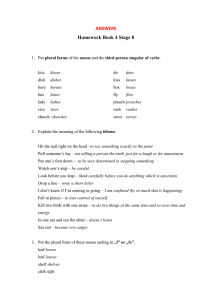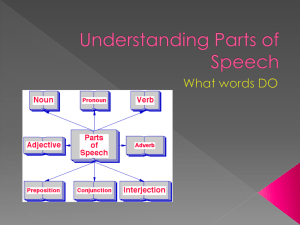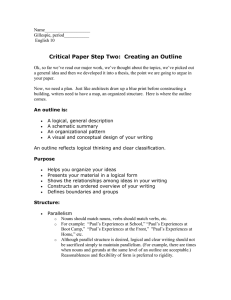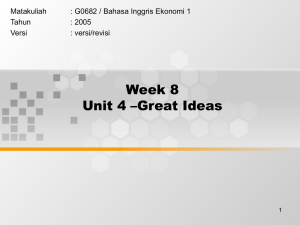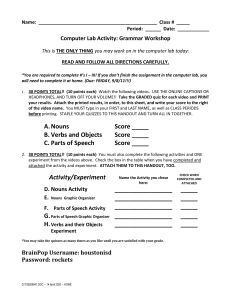Why it is Hard to Label Our Concepts
advertisement
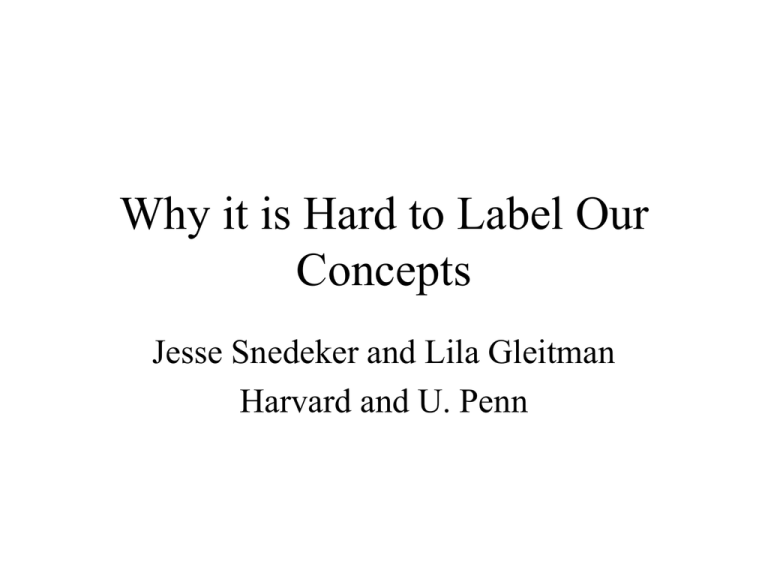
Why it is Hard to Label Our Concepts Jesse Snedeker and Lila Gleitman Harvard and U. Penn Phenomenon to Explain 1. 1st 50 words of acquired language massively over-represent nouns (45%) compared to verbs (3%). 2. Those verbs that do appear are linked to action terms (e.g. go, run, throw) even though verbs like think, know are frequent in maternal speech Why is this? problem of conceptual development or linguistic learning S&G Proposal • Language acquisition is mapping procedure • Extralinguistic info (e.g. perceptual input) only suitable for mapping to concrete concepts – Word-to-World pairing • Verbs require bootstrapping from previously acquired concrete nominals – Structure-to-World pairing (or syntactic bootstrapping) • Main idea: learners use multiple (different) converging cues to acquire vocab The Human Simulation Paradigm • 24 most frequent nouns/verbs in transcript of infant directed speech videos • Video played to adult subjects without audio – Tone played at moment target word is uttered – Clip played 30 secs before tone; 10 sec after • 6 clips for each target word (diff. contexts) • Told whether noun/or verb • Subjects asked what the target word was Experiment 1: nouns vs. verbs • Identified 45% of freq nouns; 15% of verbs • Why? – Early nouns are more concrete than verbs – Learning highly correlated with imaginability • Conclusion: – because limited to only extralinguistic data, could only get concrete words Exp 2: affects of diff info types • Paradigm change (slightly): – Only verbs – Multiple Conditions • Scenes: same as exp 1 • Nouns: given lists of nouns/pronouns in target verb construction (no visual info) • Frames: given target verb frame with nonsense nouns (no visual info) • S+N: see above • S+F: see above • Full: see above Interesting Ideas • Language acquisition as mapping problem separate from conceptual development • Split up context into features – Suitable for ML techniques • Pred/Arg struct matches Grammar – is innate

